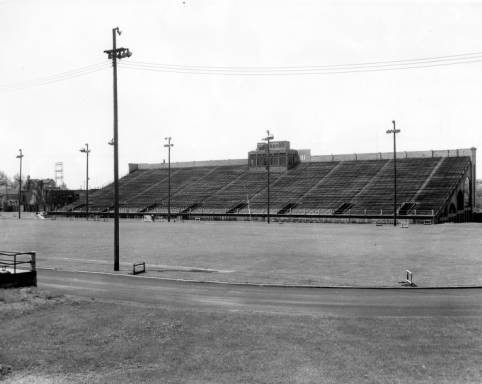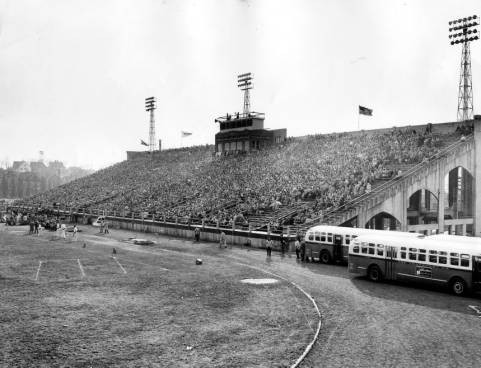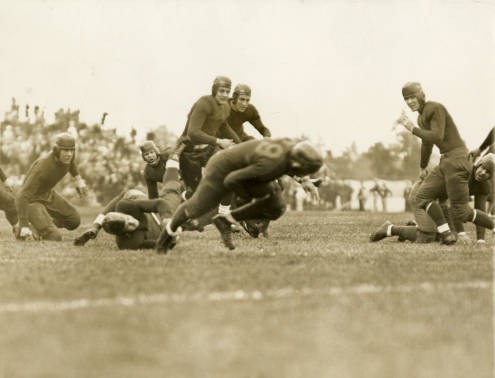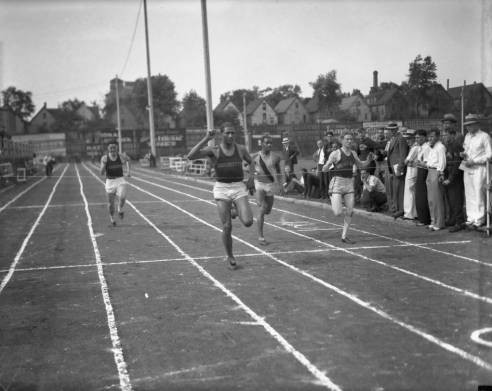Marquette University Stadium
Introduction
Text-to-speech Audio
Images
West bleachers of Marquette University Stadium circa 1925

Fans fill the bleachers for a home game circa 1936

Marquette University vs. Northwestern circa 1932

Ralph Metcalfe wins the 100 meter dash at Marquette University Stadium circa 1932


Backstory and Context
Text-to-speech Audio
On December 9, 1960 Marquette University decided to discontinue the football program due to a series of losing seasons and financial difficulties. After the football program was shut down, Marquette rented out the stadium to various organizations including University of Wisconsin--Milwaukee’s football team. In 1976, due to more financial difficulties, the stadium was demolished, which left only the track and field section. The site was used sparingly until 1998 when Marquette University High School bought the site and turned it into the Quad Park sports complex for soccer and track and field, which is now located at 38th and Clybourn.
The Marquette University’s football teams during the 1920s were known as the “Golden Avalanche.” They were undefeated from 1922-1924 and featured a crushing defense that earned them their nickname. In 1936, the Marquette football team was invited to play in the first Cotton Bowl. They were defeated 16-6 by TCU, led by quarterback Sammy Baugh, the future NFL Hall of Famer. Notable Marquette University football team alums include LaVern Dilweg, who played for the Green Bay Packers from 1927-1934 and was a Congressman from 1943-1945, and Gene Ronzani, who became the second head coach of the Green Bay Packers in 1950.
The stadium was also the home track of Ralph Metcalfe, one of the fastest humans on Earth during the 1930s. Metcalfe, who studied at Marquette from 1932-1936, was also the football team’s water boy. As the star of the track and field team, he broke numerous NCAA and Marquette records, including records in 100 meter and 200 meter sprints. During his time at Marquette, Metcalfe raced against many great track stars, the greatest being Jesse Owens of Ohio State, who he beat in the 100 meter dash at the 1934 AAU national championship held at Marquette Stadium. Metcalfe was also a decorated Olympian and raced with Owens in the 1936 Olympics in Berlin, finishing second to Owens in the 100 yard dash.
